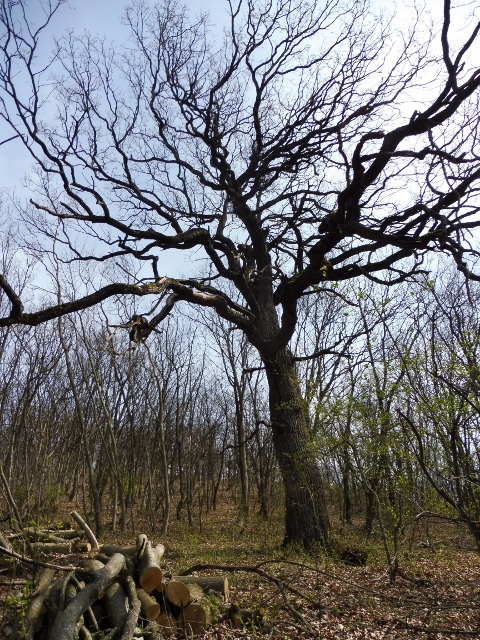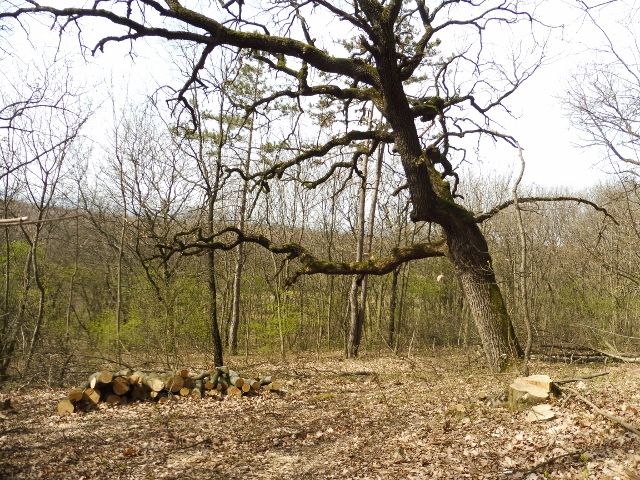DINPI Péter Koncz/Péter Szekeres
Oak giants are hundreds of years old, large trees with a sprawling canopy that maintain an extremely rich community of life, and which are very rare in our forests.
The 150-250-year-old oak trees in the project area near Fóti-Somlyo and Esztergom are witnesses of former grazing forests and wooded pastures. In the past, sheep were primarily grazed in these grassland-forest mosaic areas. Traces of such traditional landscape use, can still be recognized today through the canopy structure, since these trees were growing in a free position 100-200 years ago, their crowns are widely branched, due to the lack of shading by the dense forest. A few decades ago, grazing terminated, however, with the start of natural succession processes, i.e. with the afforestation of pastures, the rapidly spreading ash, elm and maple trees grew into the crown of the oak giants, reducing their growth space and vitality.
Therefore, where the goal is to extend the life of the oak giants, we reduced these ash and maple trees in the winter of 2019-2020 and 2022-2023. In this way, the trees are able to provide micro-habitats for a longer perios. The habitats ate used e.g. hiding, feeding, and nesting, as well as these are additional living space for the various organisms associated with rare old trees: birds, bats, insects, mushrooms, mosses. Also, the trees will be able to produce acorn for a longer period of time. This is important for the forest community, because these trees represent a genetic material which is still usefull in the adaptation of today’s and future climate change. One of the keys to preserving natural diversity, is the maintenance of genetic diversity within the species. In this way, it can be ensured that there will be individuals that are able to remain in the face of various extreme weather and biotic fluctuations, thus renewing natural forest habitats.

